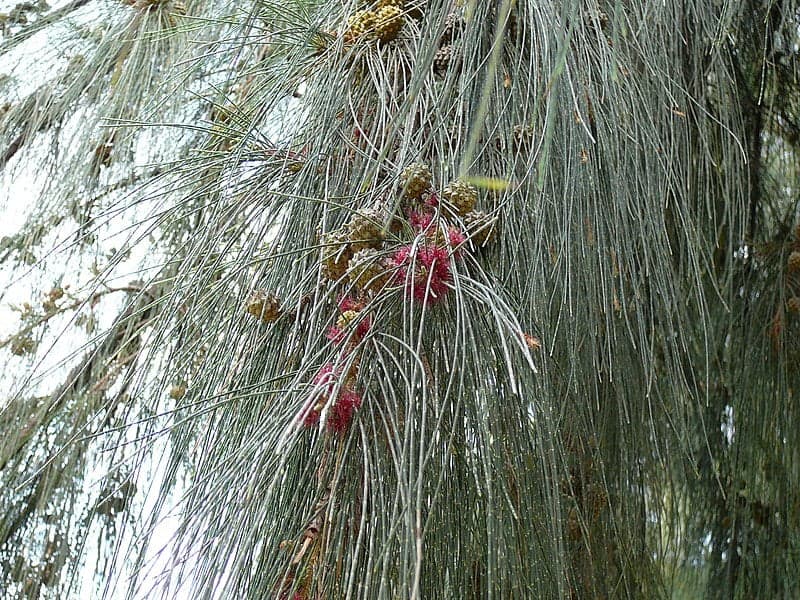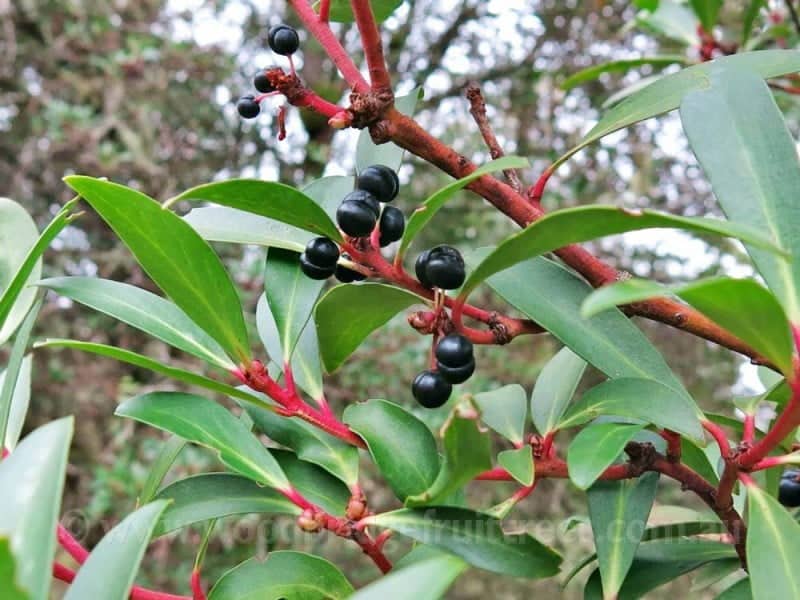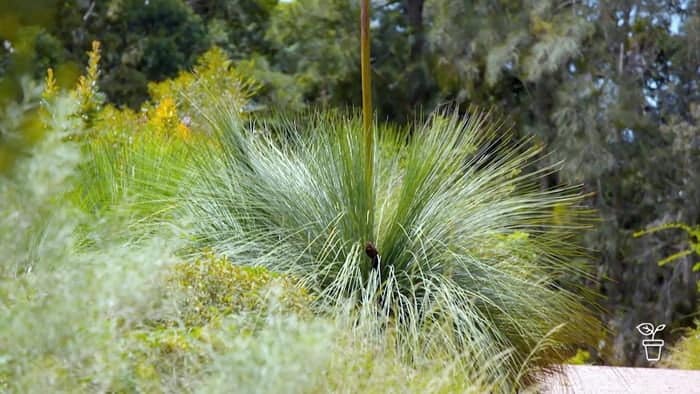In this article, we’re going to cover some important survival skills training with some highly useful Australian plants – some of which have more than one use, as outlined below.
Plants can go a long way to helping us out when we find ourselves in an emergency situation…if we have some critical bushcraft knowledge.
The right kind of bushcraft and survival know-how can literally make the difference to getting back home safely, which is why learning bushcraft and survival skills on a course with Survival Courses Tasmania will help.
Here are a few Australian plants and their often multiple uses that you may not know can be a game changer when you’re lost, or injured, or caught out by harsh weather that can appear in a matter of minutes.
Flax plant
Flax is an excellent source of natural material for making cordage.
I always advise my clients / students to carry a number of different essential items with them whenever they’re venturing out into the wilderness, or working in a remote area etc.
However, if you haven’t taken any paracord (for example) with you on your trip and you find yourself in real need of cordage to tie tree branches, or small trunks etc together – flax leaves can save the day!
Given that they have strong, fibrous qualities to their long, tapered leaves…you can simply tear 1cm strip lengthways down the leaves to create some bush cordage.
If you gather enough of these lengths, then just use a survival knot such as a ‘sheet bend,’ which will allow you to tie shorter pieces of any rope, string, or cordage together to make longer lengths.
Ask me about the sheet bend knot when you see me on one of my courses or events around Tassie.
Typha (which includes Cattails, Bulrushes etc)
Aside from the use of the fluffy plant down for tinder that we’ve covered in a previous article, cattails have a number of beneficial uses for the survivor.
When they’re found in clean water (as sometimes they can be located in storm runoff water, stagnant reservoirs, and ditches etc), the roots and the lower stems are edible.
These are a good source of carbohydrate, which will help to sustain you either on the move or while constructing your shelter, for example.
Also, with some of the species, if you split lengthways down the upper and middle part of the stem with your knife, inside the core is a yellow, worm-like plant material that can be used as tinder – separate to the fluffy inside ‘plant down’ of the cattail section.
Casuarina She-Oak (also known as Australian Pine)
 I love these trees! Their shaggy, drooping pine-like needles make for a distinctive tree – and they have numerous survival skills training uses as well.
I love these trees! Their shaggy, drooping pine-like needles make for a distinctive tree – and they have numerous survival skills training uses as well.
They grow predominantly in coastal areas, but they can also be found some way from the coast in areas made up of dry, gentle lower hills, sloping embankments, or headlands.
You can collect the green, pine-like needles and simply chew on them for a nice, gentle, lemony hit of Vit C. They’re pretty tough when you chew them, so best to suck the flavour out of them and spit out the rest.
You can also grab a handful or two of the green needles and add them to some boiling water for a cup of ‘pine’ tea (it is actually a she-oak), which I often do when I’m out in the field.
Additionally, you can use the dry brown needles as excellent bedding insulation when they’ve fallen off the tree. They trap a massive amount of air when sourced in large volumes – but make sure they’re not wet.
Eucalypt
If you break off a small, green branch (about 1cm in diameter) from any of the species of eucalypts that we have here in Australia, splay out the end where it’s broken, you can use this as a ‘field toothbrush.’
By gently splaying out the fibres at the broken end of the small branch, these will act as the toothbrush bristles – and eucalyptus is naturally anti-bacterial as a bonus.
Personal hygiene is not something to be forgotten about…even if you are in a survival situation. Primarily done so you look after your body, this will also help boost your psychological state of mind.
Native Tasmanian Cherry Tree
The foliage of these trees can be used in much the same way as a survivalist might use any of the coniferous trees, such as pine, fir, or cedar etc.
Their bushy foliage makes excellent roofing / thatching material – layered so the rain runs down and off your natural shelter – as well as superb bedding material.
Again, just like with pine, fir, or cedar boughs…piled up into a makeshift mattress underneath you, the foliage provides superb insulation from the ground by trapping air between its long, bushy greenery.
Once the cherry ‘fruit’ (it’s actually a swollen stem, technically) has ripened to a bright red colour, it can also be eaten as a form of nourishment.
Tasmanian Pepperberry
 Tasmanian Pepperberry grows really well in mountainous areas of Tassie at relatively high altitude.
Tasmanian Pepperberry grows really well in mountainous areas of Tassie at relatively high altitude.
They are small trees that grow up to about five metres in height and only the female trees bear fruit. The fruit is berry-like and starts off dark red in colour, turning black when it’s ripe.
Traditionally, mountain pepper (as it’s also known) was used for its antiseptic properties and its flavour. Both the leaves and fruit were used.
Indigenous Australians suffering from sore gums and toothaches often crushed the berries with water to make a paste, which was then applied to the mouth to treat the infection.
Additionally, it was used in traditional medicine as a treatment for skin disorders, colic, and stomach ache to name a few.
It can also be added to food as a culinary flavour enhancer for a slightly more exotic spice than black pepper.
Palm Plants (e.g. the Cabbage Palm)
Palm plants (such as the cabbage palm) can be really useful to the survivalist when you’re in a bind.
If you break off some of the fronds right at the centre of the big crown of leaves at the top of the trunk, you’ll expose the much lighter green (almost white) ‘heart’ of the palm.
Palm hearts are actually a delicacy in countries such as France – but it can be eaten as a highly sustaining food source, given that it is high in carbohydrates. Another top bushcraft tip in SCT’s survival skills training.
It doesn’t have a particularly strong flavour, but will revitalise your energy levels when you need it most and allow you to keep going for longer.
Grass Trees
 Grass trees are typically Australian and are ancient, hardy plants that thrive in nutrient-poor soils and respond to wildfire by flowering profusely.
Grass trees are typically Australian and are ancient, hardy plants that thrive in nutrient-poor soils and respond to wildfire by flowering profusely.
They grow predominantly on the coast, and are iconic plants, recognisable even to the general public. All 66 species are only found in Australia.
They’re all perennial; the smallest species grows to about 1m in height, while others reach 6m tall.
Most species are extremely slow growing. Studies of some of the taller species found that trunk height grows only about 1cm to 6cm per year, but this varies with local environmental conditions. Grass trees are often very long-lived; some are estimated to be 350 to 450 years old!
The flowering spike in the centre of the plant that grows a couple of metres or more tall, can be used in bushcraft for friction fires.
Also, the resin is traditionally used by Indigenous Australians as glue in spear-making and in patching up water containers.
So, why not up your game and improve your bushcraft and survival skills training today with SCT?
For more of our bushcraft and survival blogs, click here.
